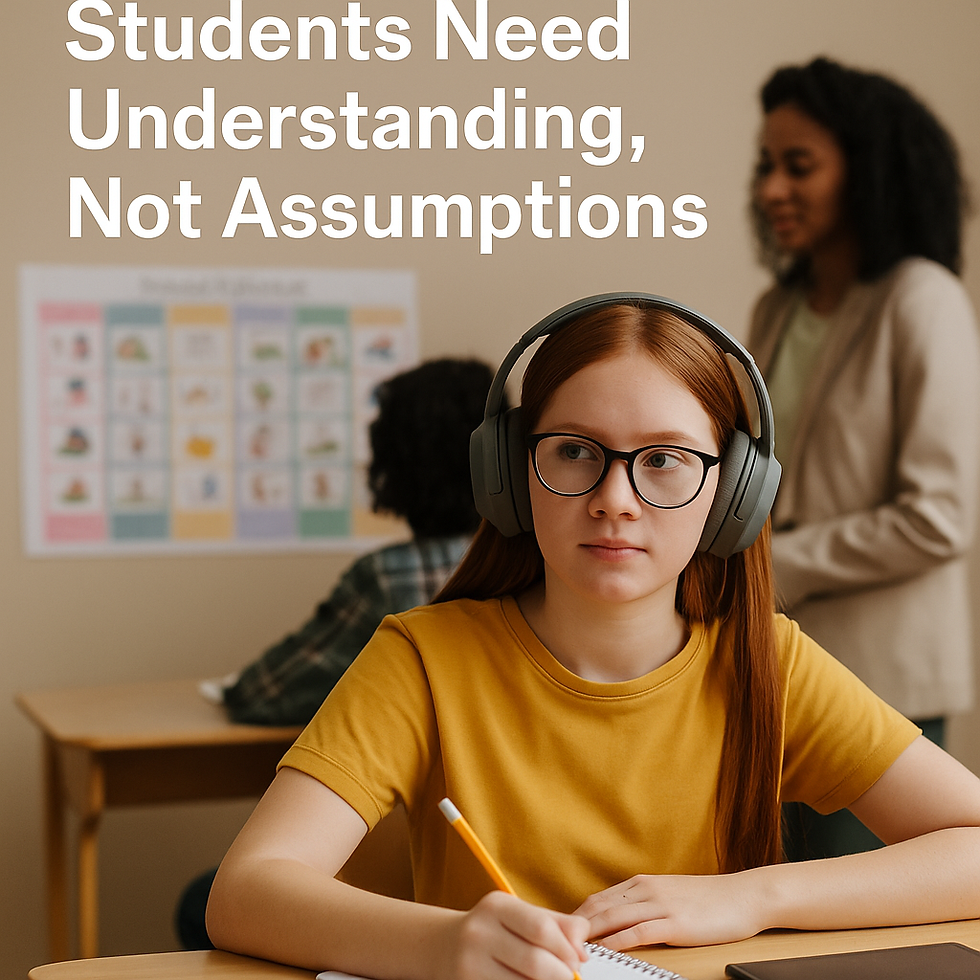Neurodivergent Students Need Understanding, Not Assumptions
- James Link

- Apr 30
- 2 min read

Let’s be honest—there’s a major disconnect between how schools operate and what neurodivergent students actually need to succeed. Too often, we’re misunderstood, mislabeled, or managed instead of supported.
Here’s the truth:
We don’t need fixing.
We need understanding.
We don’t need assumptions about our abilities.
We need respect for how we function best.
And that starts with something many classrooms still lack: structure with intention, and flexibility without chaos.
Structure Isn’t Limiting — It’s Liberating
People hear the word “structure” and think of rigidity, rules, and inflexibility. But for neurodivergent students, structure is the very thing that creates freedom. It’s how we regulate. It’s how we succeed.
Predictability reduces anxiety.
Visual schedules reduce overwhelm.
Clear expectations help us focus on what matters.
We’re not asking for special treatment—we’re asking for design that makes it possible for us to engage. When we’re supported by structure, we’re not behind. We’re unlocked.
Things like:
Checklists
Visual cues for transitions
Consistent routines
—aren’t “crutches.” They’re tools that make learning more accessible—for everyone.
Flexibility Doesn’t Mean Chaos
Flexibility is often misunderstood. It doesn’t mean throwing out all structure—it means building in responsiveness. The ability to adjust, adapt, and create room for the very real differences in how students learn and regulate.
For neurodivergent students, that might look like:
Moving around while learning
Using noise-canceling headphones or fidget tools
Taking pacing breaks without judgment
Turning in work in a format that reflects our strengths
These are not distractions.
They’re lifelines.
And when respected, they amplify our learning—not hinder it.
What We Wish You Knew
We’re not trying to be difficult.
We’re trying to survive in a system that rarely meets us halfway.
Here’s what we actually want:
Teachers who ask instead of assume
Classrooms that honor regulation, not just compliance
The right to pace ourselves without being punished for it
Safety—not just physically, but emotionally
When those needs are met, everything changes.
Because you can’t truly educate someone who feels unseen, unheard, or unsafe.
Respect Is the Real Accommodation
The best classrooms aren’t the ones where everyone looks the same or moves at the same pace. They’re the ones where students feel safe enough to be themselves—fully.
That’s what neurodivergent students need most:
Not more control.
Not more behavior charts.
More listening. More partnership. More trust.
This isn’t about lowering the bar. It’s about shifting the lens. It’s about seeing stimming, pacing, silence, or alternative expression not as defiance—but as adaptation.
Because when you really understand us, you stop trying to fix us—and start helping us thrive.
If This Resonates, Help Amplify It
This isn’t just a message for educators. It’s for anyone who believes learning should be built around people, not just policies.
If you believe neurodivergent students deserve more than assumptions—
If you believe respect and structure can unlock brilliance—
Share this.
Tag someone who needs to hear it.
Let’s keep building classrooms—and futures—where everyone can truly belong.





Comments